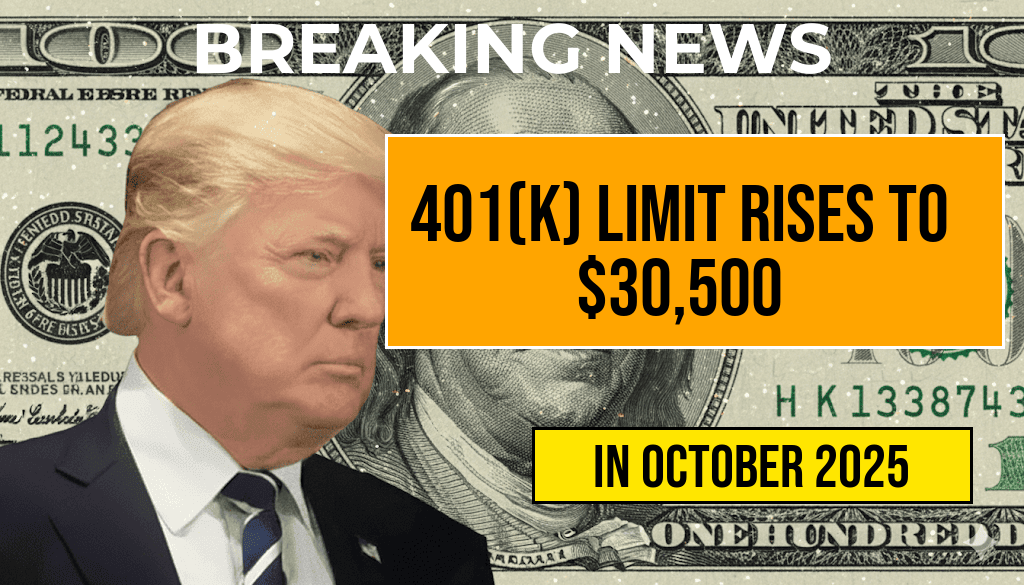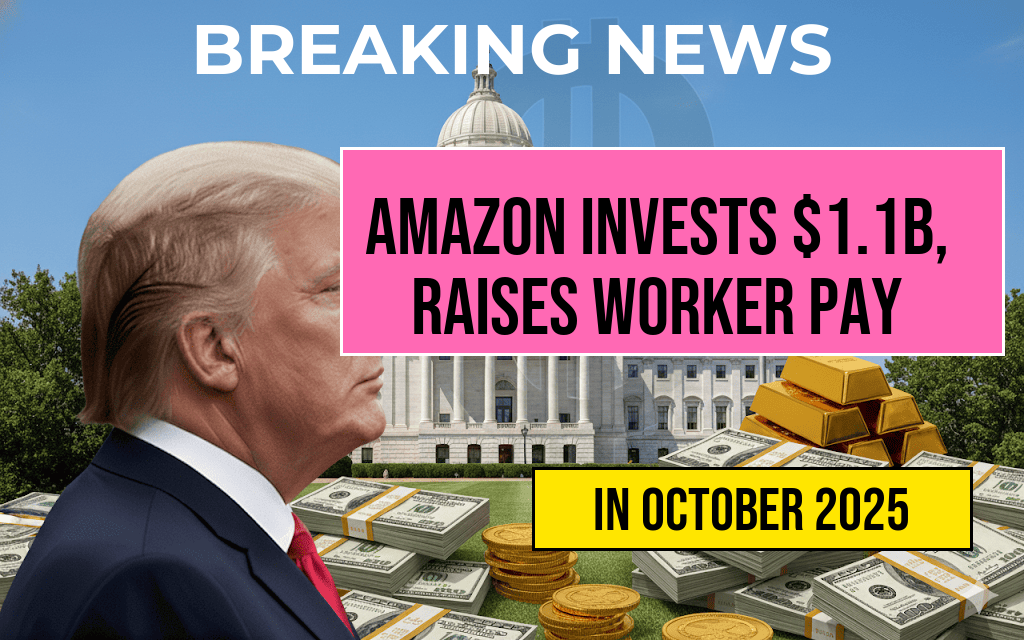The Internal Revenue Service (IRS) has announced significant updates to the 2025 contribution limits for 401(k) retirement plans, reflecting inflation adjustments and policy changes. Starting in 2025, the maximum amount individuals can contribute to their 401(k) accounts will increase to $30,500, marking a notable rise from the previous limit of $22,500. This adjustment aims to enable workers to save more for their retirement amidst evolving economic conditions and rising living costs.
For many Americans, 401(k) plans remain a cornerstone of retirement savings, offering tax advantages and employer matching contributions. The increased contribution cap could significantly impact savers’ ability to accelerate their retirement nest eggs, especially for those who have already maximized their previous limits or are seeking higher savings rates. The IRS’s annual adjustment reflects inflation and economic shifts, ensuring the contributions remain aligned with current financial realities.
Details of the 2025 401(k) Contribution Limits
| Type of Contribution | Limit for 2025 | Previous Limit (2024) |
|---|---|---|
| Employee Elective Deferrals | $30,500 | $22,500 |
| Catch-up Contributions (for age 50 and over) | $7,500 | $7,500 |
| Total Contribution Limit (including employer contributions) | Varies depending on plan specifics | Varies depending on plan specifics |
Implications for Retirement Planning
The increase in contribution limits creates opportunities for higher-income earners and those with access to employer-sponsored plans to save more aggressively. For individuals aged 50 and above, the catch-up contribution remains at $7,500, allowing seniors to bolster their retirement savings in the years leading up to retirement. Financial advisors suggest that such adjustments reinforce the importance of early and consistent contributions, especially as market conditions and inflation influence future expenses.
How the New Limit Compares Historically
- In 2010, the contribution limit was $16,500, with a catch-up amount of $5,500.
- The limit doubled over the past decade, reaching $22,500 in 2024.
- The 2025 increase to $30,500 represents a 36% jump from the previous year, reflecting ongoing inflation adjustments.
Broader Retirement Policy Context
The rise in 401(k) contribution caps aligns with broader efforts to encourage Americans to save more for retirement amid longer life expectancies and rising healthcare costs. Policymakers and financial experts advocate for increased contribution limits as a means to bridge gaps in retirement preparedness, particularly for middle- and high-income earners who can afford higher savings rates.
Additionally, the IRS periodically reviews contribution limits to prevent inflation from eroding the real value of retirement savings. The adjustments are based on the Consumer Price Index (CPI), ensuring that the limits remain relevant to economic conditions. The 2025 increase marks the largest jump in recent years, signaling a proactive approach to retirement planning support.
Impact on Employers and Retirement Plan Administrators
Employers offering 401(k) plans will need to update their plan documentation to accommodate the new contribution limits. Plan administrators must communicate these changes effectively to employees, emphasizing the opportunity to maximize savings. Many companies may also consider introducing or enhancing matching contributions to incentivize higher contributions, aligning with the increased federal limits.
Expert Opinions and Future Outlook
Financial analysts suggest that the significant increase in 2025 could influence retirement savings behaviors, especially among younger workers planning for long-term security. “This adjustment provides a tangible incentive for employees to allocate more toward their retirement accounts,” notes Forbes. “It also underscores the importance of reviewing and adjusting personal savings strategies regularly.”
Looking ahead, experts anticipate that the IRS will continue to evaluate and adjust contribution limits annually, factoring in inflation and economic growth. As the retirement landscape evolves, so too will the tools and policies designed to secure Americans’ financial futures.
Additional Resources
- Retirement savings in the United States (Wikipedia)
- Understanding 401(k) Plans (Investopedia)
- Retirement Planning Resources (Social Security Administration)
Frequently Asked Questions
What is the new 401(k) contribution limit for 2025?
The 401(k) contribution limit for 2025 has increased to $30,500, allowing employees to save more for retirement.
Who is affected by the increased 401(k) contribution limit in 2025?
All 401(k) plan participants in 2025 are affected by the new limit, including both employee and employer contributions, with no changes to catch-up contributions for those aged 50 and older.
Why did the 401(k) contribution limit increase for 2025?
The increase is primarily due to inflation adjustments by the IRS, ensuring that retirement savings keep pace with the rising cost of living.
Are there any other changes to retirement plan limits in 2025?
Yes, in addition to the $30,500 contribution limit, the IRS has also adjusted limits for annual compensation and catch-up contributions for those aged 50 and over.
How can I maximize my 401(k) contributions in 2025?
To maximize your 401(k) contributions in 2025, consider increasing your contributions up to the new limit of $30,500 and taking advantage of any employer matching programs.





